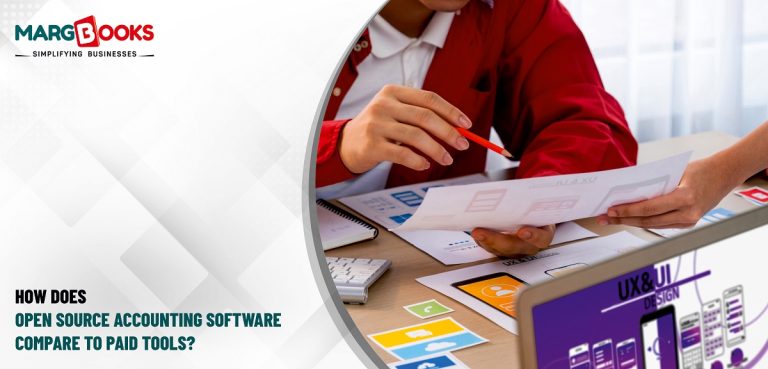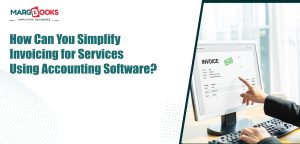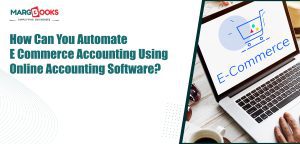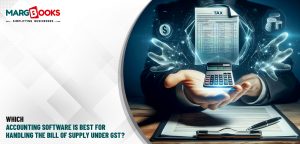When it comes to managing your business finances, choosing the right software isn’t always straightforward. You’ve got free tools, paid platforms, and everything in between. Among them, Open Source Accounting Software often catches the eye for being free and flexible. But does it do the job better than paid solutions?
In this blog, we’ll break it down in plain language, no jargon, no fluff, just a friendly walkthrough of what open source offers, where it falls short, and how it stacks up to paid options, MargBooks.
The Real Story Behind Open Source Accounting Software
The term Open Source Accounting Software usually sparks one big question: “Can something free be good enough for my business?” And that’s fair. The appeal of free tools is strong, especially when budgets are tight. But there’s more to the story.
Open source software is developed by communities of coders. That means you can often customize it however you want. Sounds amazing, right? Well, it can be, but only if you or someone on your team has the time (and technical know-how) to make those changes.
Advantages and Disadvantages
To help make things clearer, here’s a simple breakdown of how the two compare:
Open Source Advantages:
Free to use – No licensing fees or subscriptions. Great for startups or tiny teams.
Customizable – You can tweak the open source accounting software to suit your needs if you know how.
Community-driven – Plenty of forums and GitHub repos to turn to for support (though not always timely or guaranteed).
Open Source Disadvantages:
Steep learning curve – You may need a developer just to get started.
No official support – If something breaks, you’re on your own.
Security concerns – Updates and patches aren’t always timely.
Paid Software Advantages:
Ready out of the box – Setup is simple, even for non-tech users.
Support when you need it – Most tools come with customer support, updates, and training.
Industry-specific features – Tools such as MargBooks are built with real business use cases in mind.
Paid Software Disadvantages:
Ongoing cost – You pay monthly or yearly.
Less flexibility – You’re limited to the features the provider offers, unless they allow add-ons.
Real-World Example: A Footwear Distributor’s Dilemma
Let’s say you run a growing footwear business. You started with spreadsheets, then dabbled in a free open-source tool. It worked, until you needed barcode scanning, supplier-wise tracking, or easy tax reports.
Here’s where things got tricky. The open-source tool didn’t have built-in features for your growing operations. That’s when you started exploring something more purpose-built, Footwear distribution software from MargBooks.
Paid platforms often come with features tuned to your niche. You don’t have to build them from scratch or stitch together plugins that may or may not work.
But What If You’re a DIY Type?
Maybe you love tinkering. Maybe your cousin’s a developer. In that case, open source could be fun. You could build exactly what you want, at your own pace.
But for most business owners, especially when dealing with taxes, vendors, payroll, or inventory, it’s peace of mind that matters more than “custom freedom.” And peace of mind is something MargBooks users often talk about: clear reports, simple UI, and fast setup.
What About Online-Only Tools?
Both open source and paid tools now offer cloud versions. But not all are created equal.
It should mean you can access it from anywhere with our online accounting software, not just your laptop. With our software make this seamless. You log in, check your dashboard, send an invoice, all from your phone if needed.
Open source tools can offer this too, but it usually takes some technical wrangling. Hosting your database. Setting up your cloud access. For many, it’s not worth the hassle.
A Quick Snapshot: Which One Fits You?
Go Open Source if…
You have tech support in-house, enjoy DIY setups, and don’t need urgent support.
Go Paid if…
You want to get started fast, need support, or want business-specific features built in.
The Margbooks Middle Ground
Now, it is interesting because it brings in the convenience of paid software but keeps things affordable. Many small business owners we’ve spoken to started with open source, got stuck, then switched to MargBooks for one big reason: ease. And you don’t need a tech degree to get going. It’s that sweet spot between DIY and done-for-you.
Conclusion
Whether you’re just starting out or already knee-deep in invoices, it helps to understand what Open Source Accounting Software can and can’t do. If you’re tech-savvy and love tinkering, it can be a good fit.
But if you’re after reliability, support, and features that work right away, tools such as MargBooks might just make more sense. In the end, the best tool is the one that saves you time, simplifies your life, and doesn’t leave you guessing when it’s tax time.




